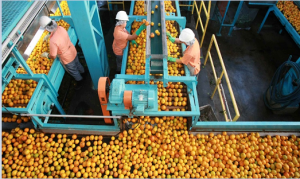 See photos
See photos
Initial views regarding the 2017/18 crop indicate that orange production in São Paulo State and Triângulo Mineiro may be higher than the current production (2016/17), but it might not increase significantly. Despite the favorable weather in the period of flowering events and flower settlement, production in the next season will not be enough to recover the low ending stocks forecast for the end of the 2016/17 season, on June 30, 2017. Thus, supply may continue low compared to demand in 2017/18, keeping the trend of firm values to growers for one more year.
Processors advanced purchases (since October/16), with new trades to 2017/18 between 20.00 BRL and 25.00 BRL per 40.8-kilo box, harvested and at the processor – some trades have added value, according to the price of orange juice in the international market. The great interest in closing contracts earlier also indicates that 2017 may be a year of firm demand from processors, since it would be a strategy to try to recover at least part of juice inventories.
Fearful at first, most citrus growers started to trade with processors only in November/16. In December/16, new trades were closed, but many growers are still waiting for the nearness of the next crop to check if remuneration will be adjusted.
Flowering events, which occurred in August/16 in most citrus groves, were considered satisfactory and, differently from 2015, received rains within or above average, besides the mild weather in that period, which favored flower settlement. Besides, the resumption of investments in crop handling, pushed up by higher prices in 2016, reinforce expectations for production increases. In years of low prices, many growers do not fertilize groves.
A report released in December by the USDA (The United States Department of Agriculture) indicates production of 340 million boxes of orange in 2017/18 in São Paulo State, 37% up compared to the 2016/17 season. Growers consulted by Cepea, in turn, believe in something near 300 million boxes. Anyway, this volume would not be enough to balance orange juice inventories at 300 thousand tons again, since 2016/17 may end without stocked juice.
According to CitrusBR (Brazilian Association of Citrus Exporters), the final results, in June 2017, may be a little more than 2 thousand tons of FCOJ Equivalent, which, if confirmed, will be the lowest level observed in all times.
Despite considering the possible lack of oranges, processors have not limited international sales to keep a minimum volume stocked. Companies have been closing new sales, in spite of having already purchased some volume in the 2016/17 crop, influenced by price rises of orange juice in the international market.
Source: hfbrasil.org.br